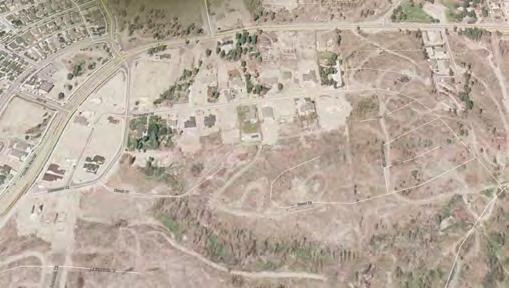2.2 WUI guides, standards, and model codes The California Building Code (California Building Standards Commission 2019a) Chapter 7A regulates materials and construction methods for exterior wildfire exposure. Leading requirements introduced in the 2008 edition of the code include: 1. Roofing material is fire-resistant: non-combustible or made of fire-retardant–treated wood, or made of fire-retardant–treated wood shingles and shakes (Sec 705A). 2. Gutters prevent accumulation of leaves and debris (Sec 705A4). 3. Fine mesh covers attic ventilation openings (Sec 706A). 4. Exterior cladding must be non-combustible, or ignition-resistant, or tested for 10-minute direct flame contact, or backed by 5⁄8-inch Type-X gypsum sheathing on the exterior side of the framing, or have a one-hour fire rating on the exterior side of the framing (Sec 707A). 5. Glazing must be multi-pane with one tempered pane, or glass block, or have 20-minute fire rating, or tested for 10-minute direct flame contact with Sec 12-7A (Sec 708A.2). 6. Doors must have an exterior surface that is non-combustible or ignition-resistant, or be solid core, or have a 20-minute fire rating, or tested for 10-minute direct flame contact with Sec 12-7A (Sec 708A.3). 7. Decks, porches, balconies, and stairs must have walking surfaces that are constructed of ignitionresistant material, or exterior fire-retardant–treated wood, or are non-combustible, or resistant to three-minute direct flame and burning brand tests (Sec 709A). Enforcement varies by jurisdiction. CAL FIRE oversees fire protection mostly in rural areas and enforces Chapter 7A in any region that it designates as a “severity zone” – with moderate, high, or very high hazard level. Cities and other jurisdictions with their own fire departments generally only use Chapter 7A where CAL FIRE says the threat is very high. Local governments can reject the CAL FIRE designation. Two other relevant existing WUI building codes include International Code Council (2018), a model code to regulate the construction, alteration, movement, repair, maintenance, and use of buildings and non-building structures in the wildland-urban interface, and the National Fire Protection Association (NFPA 2018) standard for reducing structure ignition hazards from wildland fire. FireSmart Canada (2018) offers guidance for homeowners on how wildfires grow, spread, and burn homes. It explains non-combustible construction and how to maintain Home Ignition Zones 1 through 3. It does not represent a code or standard. Some communities have adopted local ordinances to reduce fire risk in existing buildings. The City of Big Bear Lake (2008), a community of 5,200 in Southern California, passed an ordinance declaring wood shake shingle roofs “a severe fire hazard and danger,” ordered homeowners to replace them by 2012, and offered cash incentives of up to USD $4,500 for new roofs.
11








